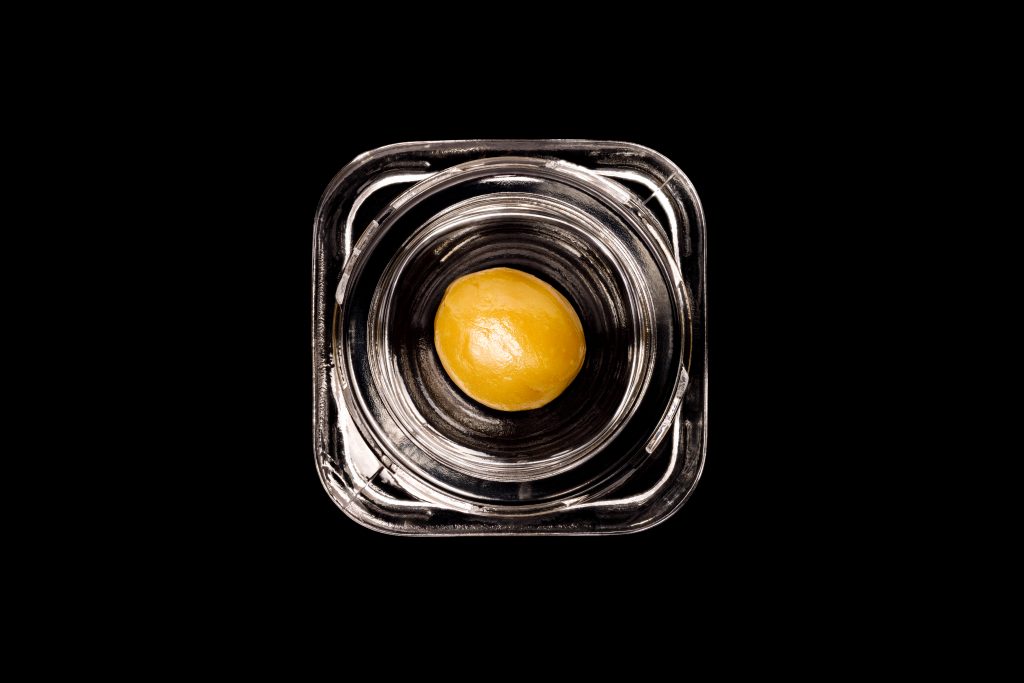Rosin is by far one of our favourite cannabis products to enjoy on a sunny afternoon in Whistler.
To make rosin, resin is extracted from cannabis trichomes using nylon mesh filter bags, a heated press, and some parchment paper. The result is a solventless cannabis concentrate. The concentrate is full of cannabinoids and terpenes, and is ready for consumption.
Vaporization is the most common consumption method of rosin. Alternatively, it can be added to a joint or bowl.
Keep reading to learn how rosin is made, what it looks like, and why a consumer might prefer it over other concentrate products.
How is Rosin Made?
Rosin can be extracted from dry cannabis flower, bubble hash, or dry sift.
The more refined the input, the better the extracted product will be. No foreign solvents (alcohol or hydrocarbons) or filter media (clay, silica, etc) are used in the process. As a result, the final output product is a true representation of the plant.
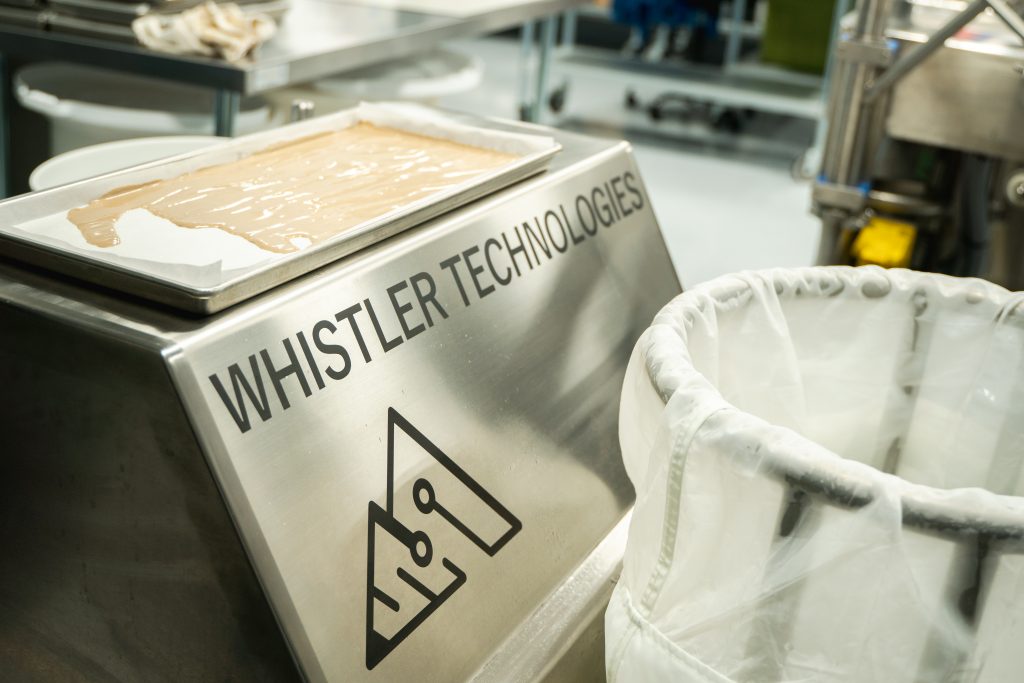
To begin, the extractor will fill a nylon mesh filter bag with any of the previously mentioned inputs. Our favourite micron size is 25u, but others may prefer to use smaller or larger micron sizes depending on the input material. Then, a second filter bag will be added for additional filter strength and efficiency.
The extractor will then line their plates with parchment paper. A parchment paper lining ensures the rosin does not touch the plates directly. Also, it gives the rosin somewhere to ‘run’ once it has been extracted from the input material.
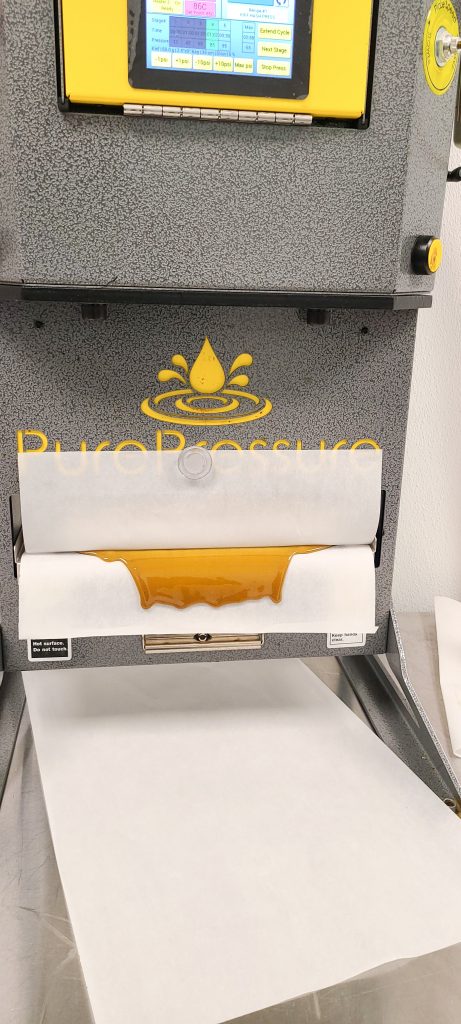
Once the rosin press is lined with parchment paper, place the prepared input material wrapped in nylon mesh, in the centre of the heated press plates.
Depending on the extractor and input material, the rosin press will be set to a temperature between 150-200F (65-93 C). Then, the extractor will slowly bring the heated plates together using the press. As they continue to bring the plates together, pressure will be applied to material in-between the plates.
Eventually, the combination of heat and pressure will be enough to extract the resin from the input material. The pressures achieved will depend on the amount and type of input material being extracted. Typically, a maximum of 1000psi at the bag will be adequate for a thorough rosin extraction.
Finally, the rosin is collected from the parchment paper. It can be stored for packaging or further post-processing. Stay tuned for a future blog post, in which we will discuss post-processing in depth.
What does Rosin Look Like?
Rosin can come in a variety of consistencies. The consistency depends on the input material and post-processing that occurs after pressing.
Typically, if the rosin has cooled immediately after the extraction it will have a glassy, translucent appearance. It can be brittle, similar to glass. This consistency is known as fresh press and will eventually change unless it is kept frozen.

If the rosin is stored above freezing temperatures, it will eventually transform into a batter or crumble consistency. The colour will be dependent on the extraction process parameters, as well as the quality of input material used for the extraction.
Post-processing procedures can be performed by the extractor to adjust the consistency, flavour, and stability of the rosin. Techniques that involve heating the rosin allow it to take on a sauce or slush consistency, which is similar to butane extracted concentrates.
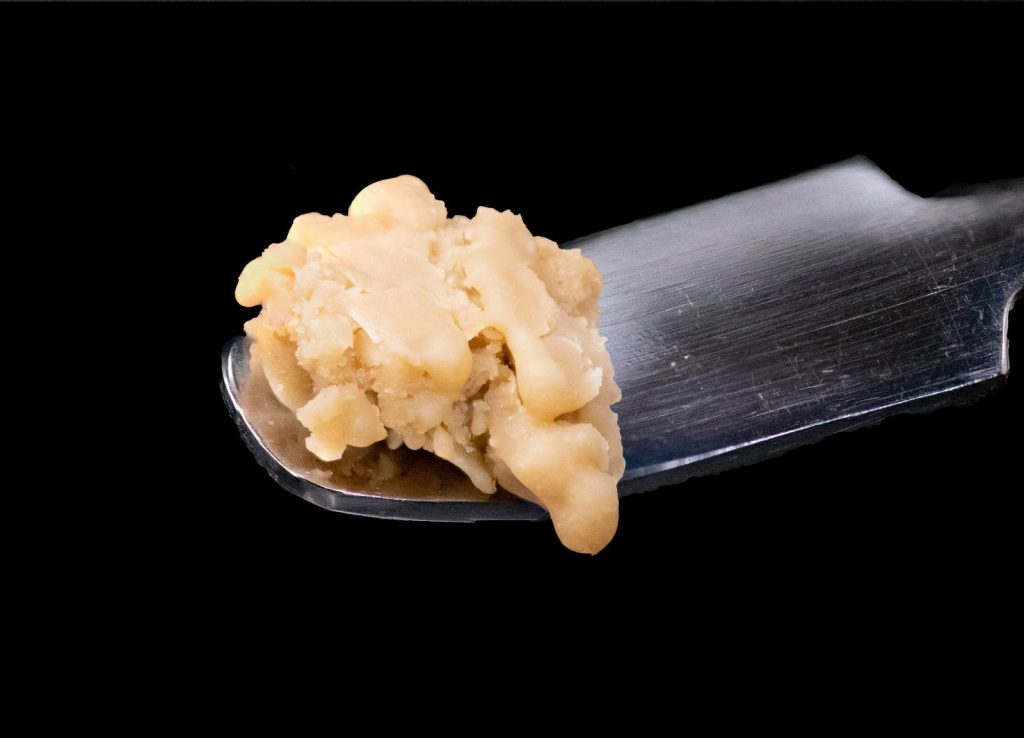
Rosin can also look like transparent syrup. Often, it will be decarboxylated and turned into a syrup for vaporizer cartridges. High-quality rosin will have a high enough terpene content that no additional fillers or ingredients are required for vape cart formulations!
What Do Consumers Think?
Rosin is the cannabis concentrate that is the truest representation of the flower.
When compared to other extraction methods, the exposure to heat is quite low. This allows for maximum terpene retention.
While filtering processes used in other extraction methods often yield more photogenic products, the consumption experience is often lacking. As consumers become more educated on cannabis concentrate products, they quickly realize that rosin offers a better consumption experience.
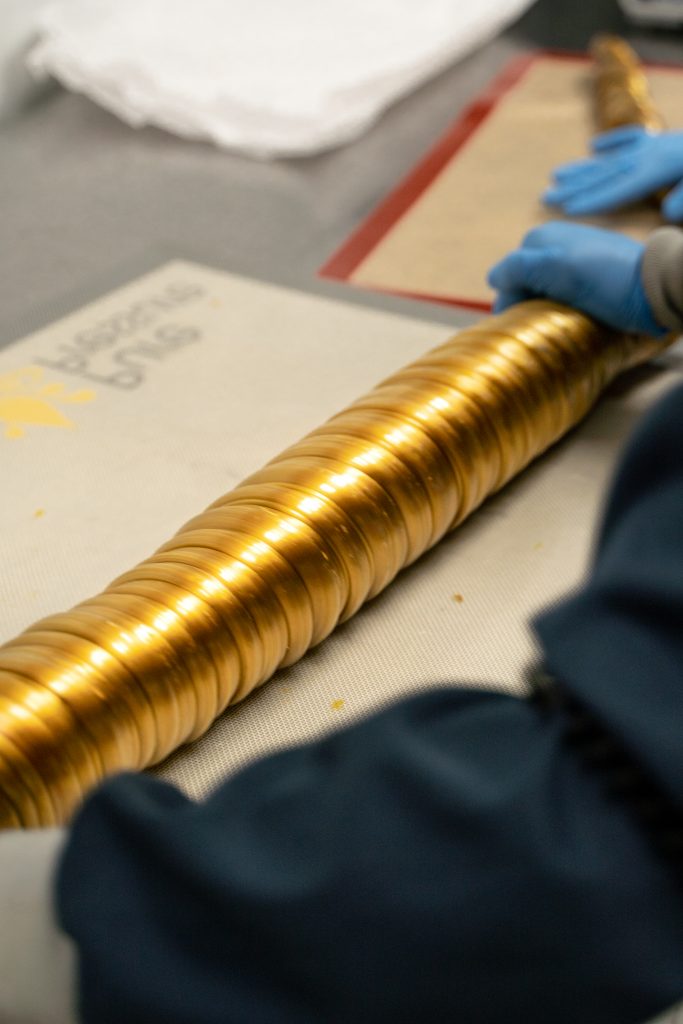
Whistler Technologies
Whistler Technologies cannabis extraction systems allow extractors to achieve the lowest input costs on rosin extraction. The WT-CRAFT+ offers the lowest cost per gram ratio on the market.
It is important to note that bubble hash offers the best rosin extraction efficiencies. For this reason, there is no better system to extract your biomass with.

Every Whistler Technologies system includes comprehensive training. In addition, we also offer training on rosin extraction and post-processing procedures, using any equipment available on the market.
Whistler Technologies also offers a wide variety of consulting services. For example, we can recommend and set up your business with the best extraction equipment, specific to your needs.
If you are interested in setting up rosin extraction, reach out to our knowledgeable team. With over 50 years of combined experience in the cannabis industry, our consulting services can guide you every step of the way. From soil to oil, and from lab to shelf.
